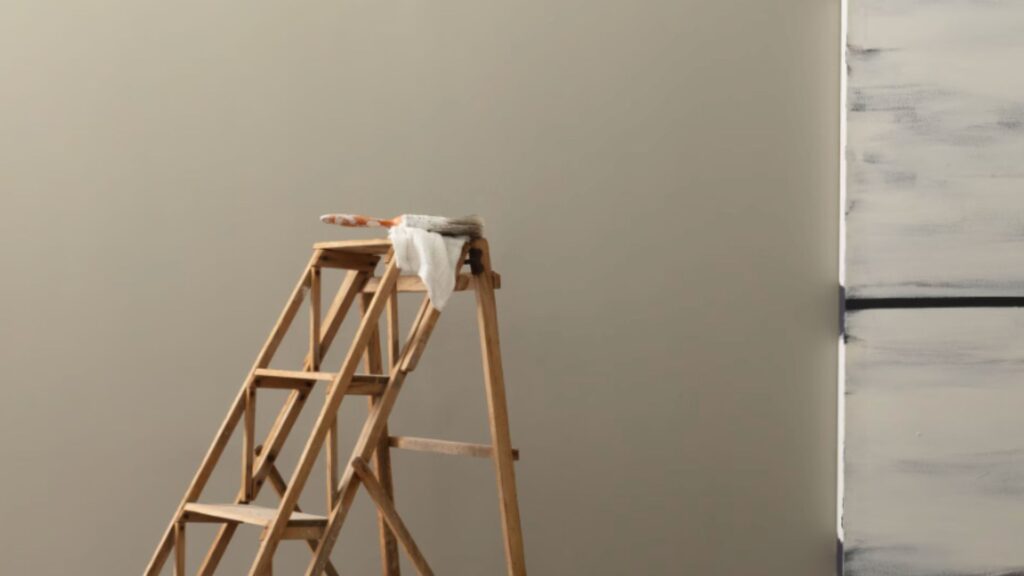If you’re searching for a color that’s soft, stylish, and works in just about any room, Finnie Gray by Benjamin Moore (CW-55) might be the one.
It’s not too dark. Not too light. And it brings a quiet, cozy feel without making a space feel small or dull.
If you’re painting a whole room or just adding an accent, Finnie Gray can be a solid, dependable choice.
In this blog, I’ll break down what makes Finnie Gray special, how it behaves in different lighting, what colors go well with it, and how to use it in different spaces.
I’ll also cover the types of styles it fits and tips for avoiding common mistakes. By the end, you’ll know exactly how and where to use this easygoing shade.
What Kind of Color Is Finnie Gray?

Benjamin Moore’s Finnie Gray is a medium gray with slight green undertones. It’s cool, but not cold.
There’s just enough warmth hiding beneath the surface to keep it feeling soft instead of sharp. That balance is what makes it so versatile. It has an LRV of 41.96
Unlike some grays that turn blue or purple depending on the light, Finnie Gray stays pretty steady.
Its natural, earthy base keeps it grounded. In daylight, it feels airy. In dim lighting, it gets a little cozier without becoming muddy.
This shade gives off a gentle, welcoming feel. It’s modern but not trendy. Stylish but not flashy.
Because it’s not too bold, it allows other colors and textures in a room to stand out.
Another strength of Finnie Gray is how well it transitions across seasons. In the warmer months, it feels light and breezy.
In cooler seasons, it adds just enough depth to feel comforting without making the room too dark. It’s a steady, middle-of-the-road color that still brings character.
What Colors Go Well with Finnie Gray?
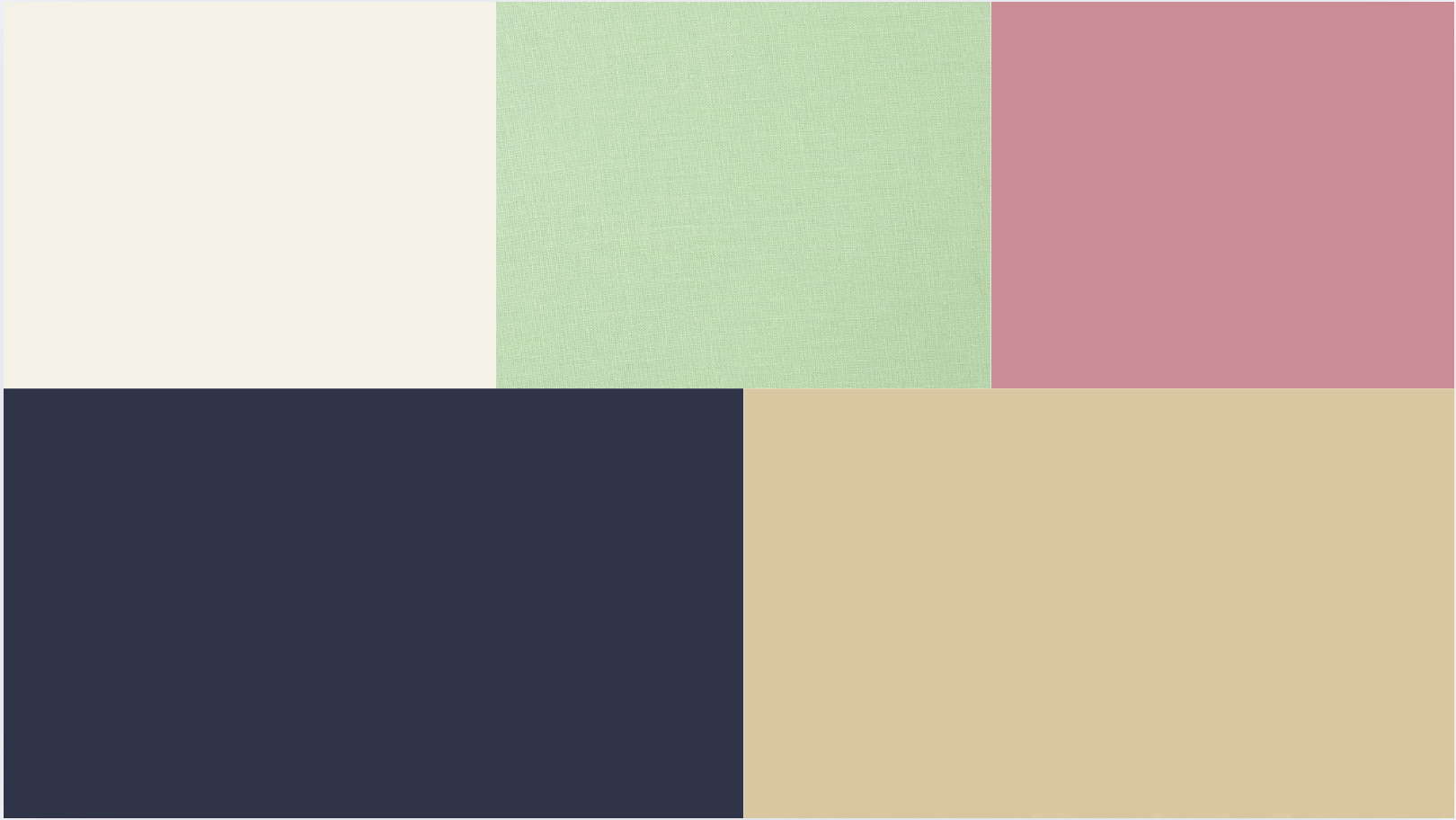
Finnie Gray pairs easily with lots of other shades, which is another reason it’s such a smart pick.
- White: Clean whites on trim or furniture make Finnie Gray look polished and balanced.
- Soft Greens: Soft greens, beiges, or browns bring out the natural feel of Finnie Gray.
- Dusty Pink: This mix adds softness and a little warmth; great for bedrooms.
- Navy: These richer tones bring depth and contrast.
- Gold or Brass: Warm metals make this cool gray feel a bit richer.
I also like to combine Finnie Gray with patterns. Try it with striped bedding, floral curtains, or textured rugs. This adds interest and layers to your space without making it too busy.
Finnie Gray is also a nice base if you want to add color through art, fabric, or furniture. It doesn’t fight for attention, which helps bolder accents pop.
What Style Works Best with This Color?
Because it’s simple and calm, Finnie Gray fits into many different decorating styles.
- Modern: Clean lines and neutral tones make Finnie Gray a great backdrop.
- Traditional: It pairs well with soft fabrics, classic furniture, and layered looks.
- Scandinavian: Use it with white, light wood, and minimal design for a peaceful setting.
- Industrial: Combine with metals, darker shades, and raw materials for a moody, cool vibe.
- Transitional: A mix of old and new pieces works beautifully with this steady gray.
Finnie Gray also supports artistic or eclectic spaces. If you like mixing styles, using bold artwork, or playing with contrast, this gray can keep the room feeling grounded.
No matter if you’re going for cozy or sleek, Finnie Gray can adjust to your look. It won’t take over a space, but it gives it an easy foundation.
Is It a Warm or Cool Color?
Finnie Gray leans cool, but it has just enough warmth to keep it from feeling harsh. Its green undertone helps it feel grounded, especially in natural light.
In rooms with lots of sunlight, Finnie Gray feels soft and open. In darker rooms or under artificial light, it gets a little deeper, which can add a nice touch of comfort.
That said, lighting matters. Always test a sample before painting a whole room. Look at it in both daytime and nighttime lighting to make sure it feels right.
Another helpful tip is to consider nearby finishes. If your floors or furniture have red or orange undertones, Finnie Gray’s green hue may help balance them out.
On the other hand, if your space is already full of cooler grays and whites, you may want to warm things up with accessories or wood textures.
What Paint Finish Should You Use?
Choosing the right finish depends on the room and how much use the walls get. Here are a few safe bets:
- Matte or eggshell: Great for bedrooms, living rooms, or dining rooms. These finishes hide flaws and give a smooth look.
- Satin: Better for kitchens and bathrooms where you need to clean walls more often.
- Semi-gloss: Ideal for trim, doors, or cabinets. Adds a little shine and holds up well.
If you want a clean, smooth appearance without glare, go with matte or eggshell. For busy areas, satin gives a bit more durability.
And don’t forget ceilings and moldings. Painting my trim in a soft white with a semi-gloss finish made my Finnie Gray walls feel more crisp and finished.
Real Room Ideas Using Finnie Gray
These room ideas show how versatile and calming this shade can be:
Living Room
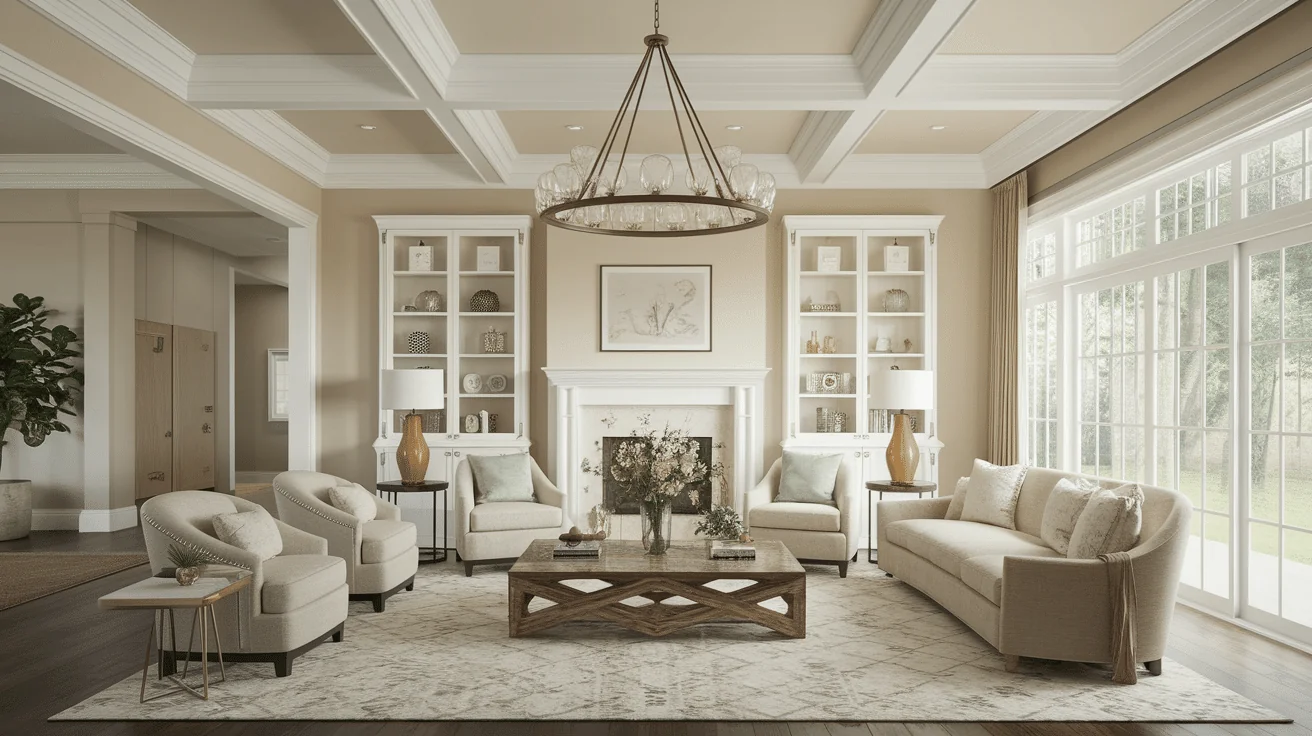
Finnie Gray on the walls with soft white trim and light wood floors creates a relaxed, balanced living space.
Add a cream-colored couch, textured pillows, and a few indoor plants to warm things up. Try navy or mustard accents for a bold touch.
Layer with rugs, throws, and metal or wood furniture for added depth. Wall art in black and white or botanical prints pairs well with this shade, too.
Bedroom
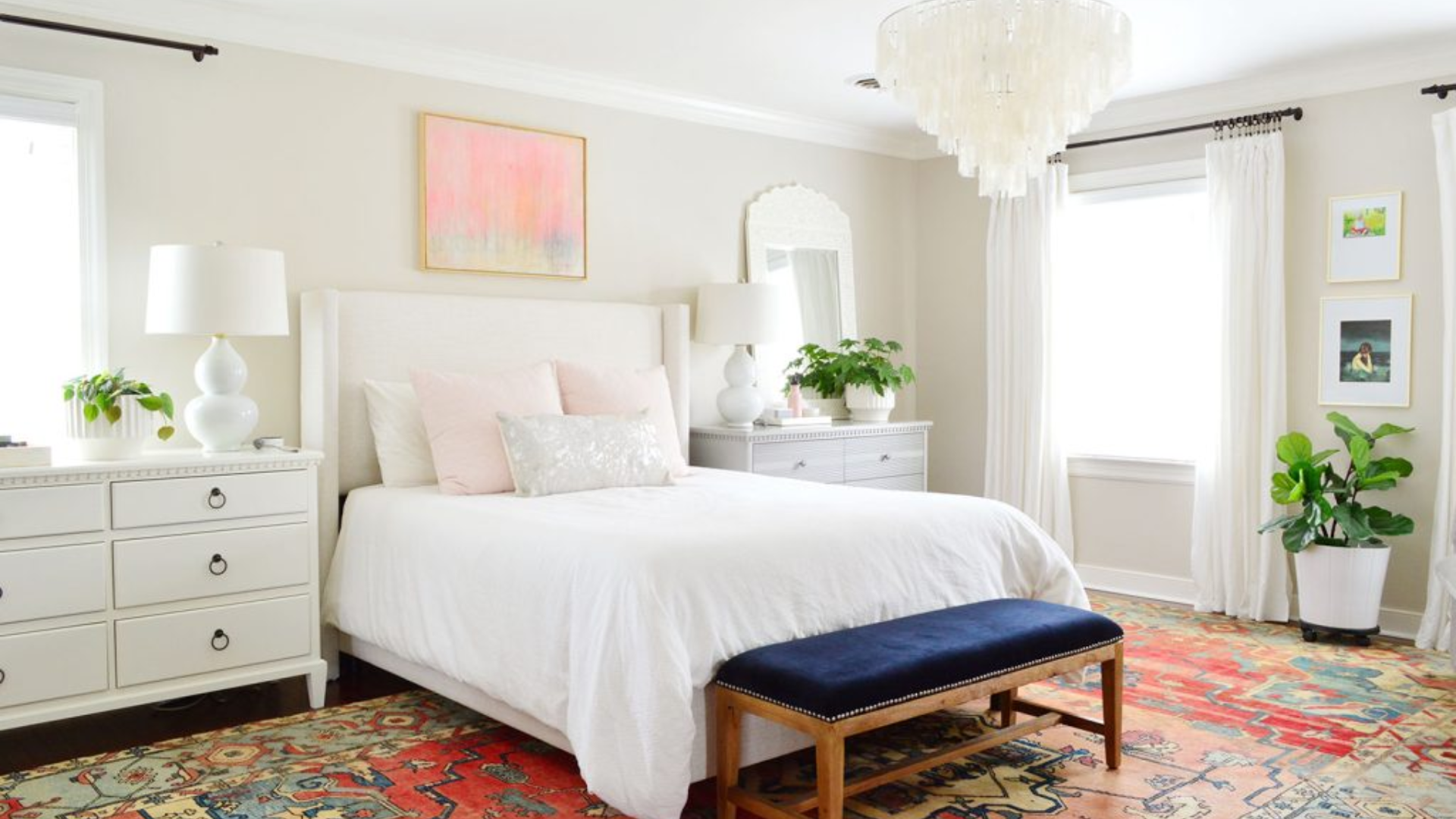
Paint all four walls in Finnie Gray and layer with white bedding, soft beige throws, and dark wood furniture.
Add gold reading lamps or soft gray drapes to keep the space feeling restful but rich.
Want more warmth? Add accent pillows in soft blush or rust. These gentle color touches can turn your bedroom into a restful escape that still has personality.
Kitchen
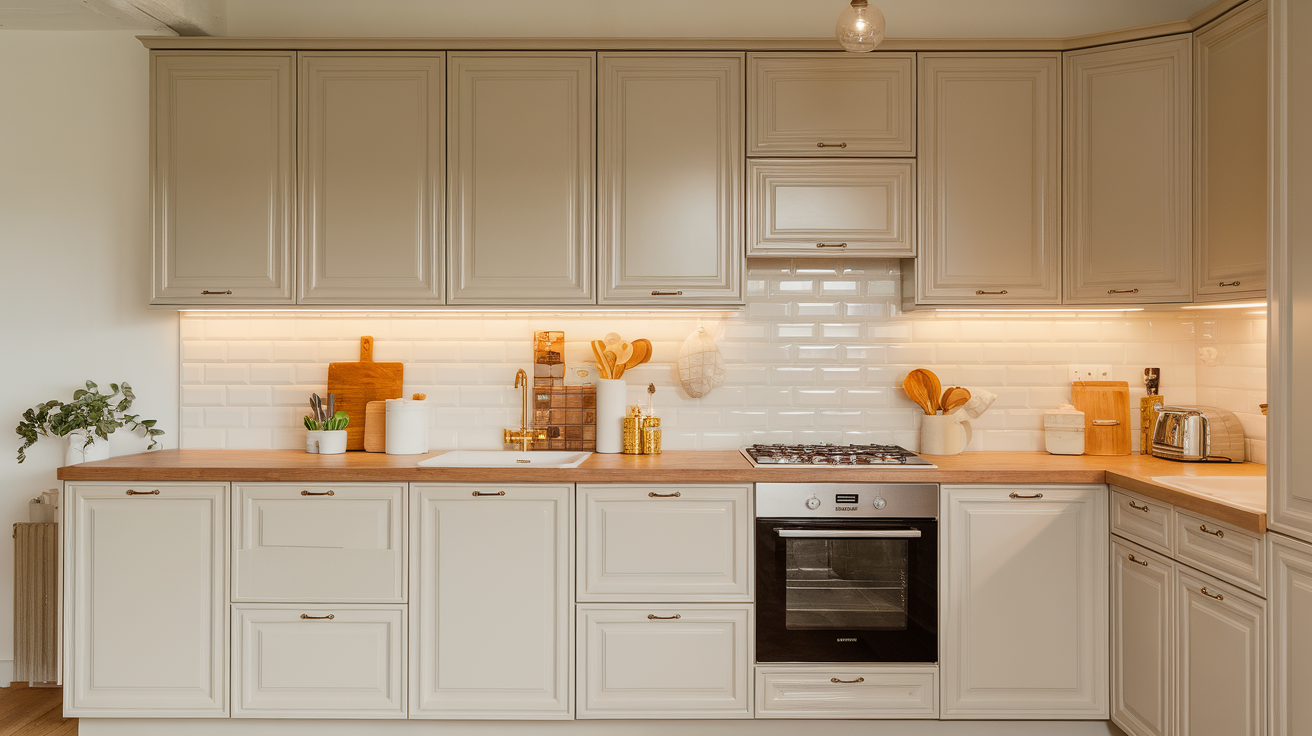
Use Finnie Gray on lower cabinets or even the walls, paired with white upper cabinets and brushed nickel hardware.
Add a warm wood countertop or floating shelf to bring in texture.
Finnie Gray also looks great on a kitchen island. Pair it with bar stools in natural finishes and light fixtures in brass or black to complete the look.
Bathroom

Finnie Gray walls with white tile and soft metal accents (like brushed brass or matte black) give a spa-like feel. Add soft towels in sage or off-white and a wooden stool or basket for warmth.
This gray works especially well in small bathrooms, where dark colors may feel too heavy but plain white might seem flat. It adds just the right amount of personality.
Common Mistakes to Avoid
Even great colors can go wrong without the right approach. Watch out for these common slip-ups:
- Skipping a sample test: Always paint a patch and see how it looks in your own space and lighting.
- Pairing with cold whites: Stick with a warmer or neutral white so the room doesn’t feel too cold.
- Too much gray: Break up the space with texture, color accents, or warm wood to avoid a flat look.
- Wrong finish for the space: High-traffic areas need finishes that are easy to clean. Don’t go too flat in busy rooms.
Also, don’t forget about lighting temperature. Warm white bulbs can make Finnie Gray look more balanced. Cool white bulbs may bring out too much of the green or make the space feel too chilly.
Final Thoughts
If you want a color that works in almost any space, feels calm but not boring, and fits lots of styles, Finnie Gray is worth considering. It’s steady, soft, and flexible.
You can use it as a background or as the main color. You can pair it with rich or soft accents. And you don’t have to worry about it going out of style.
It’s the kind of gray that feels thoughtful and lived-in, not sterile or cold. It’s perfect for homes that want warmth without going beige and calm without being plain.
Benjamin Moore Finnie Gray is an easy favorite for many homeowners, including me, who want something safe, stylish, and grounded.

